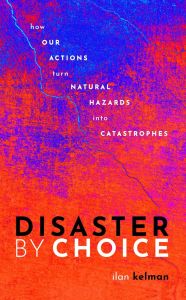People can elude disasters and thus “disasters are not natural.”
Earth, the oceans and space generate fires, earthquakes, deadly winds, floods, and, occasionally, solar storms or meteorites. These events may turn into disasters with significant loss of life and property. Though humans don’t cause them, these events do not constitute natural disasters.
Humans can cope with natural phenomena and prevent them from turning into disasters. Measures to prevent or mitigate losses exist, but individuals, society and governments often choose not to implement them.
Nature doesn’t generate disasters. People’s choices make disasters.
Haiti suffers multiple natural hazards with depressing frequency. Hurricanes, epidemics or earthquakes seem to visit the nation every decade or so, and sometimes in combination. In 2010, a strong earthquake – magnitude 7.0 – struck near Port-au-Prince. More than 150,000 Haitians died.
During recovery efforts, United Nations (UN) workers re-introduced cholera, which Haiti had eradicated. This killed 10,000 people. Given Haiti’s history, aid should have come before the next, inevitable calamity...










Comment on this summary